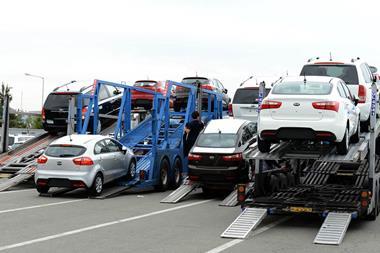Panellists at this year’s Automotive Logistics and Supply Chain North America Live conference agreed that digital supply chain tools have been a great help in navigating urbulent times, however OEMs like Volkswagen think more fundamental gains are reached when people look beyond standard solutions.

Lars Bäumann, who has been responsible for IT systems and processes in production and logistics worldwide at Volkswagen Passenger Cars, said that digitalising supply chain management wasn’t just about setting up a shiny new shared platform. For it to work, you have to rethink the business process and scrap local ways of working that previously operated perfectly well. Naturally, that becomes more difficult, the larger the company is.
Speaking on a panel focused on managing global supply chain disruption, he explained: “Implementing the technology in my experience is less than 10% of what you have to do. [For instance,] implementing an SAP system is a technical task – your IT department can do that. But really, adapting your organisation, changing your organisation and also changing the way you are working, that is the huge task that you have to fulfil if you want the technology to succeed.” The transformation is more psychological than technical, Bäumann summarised.
Philippe Grinstein, director, strategy and business development at emergency logistics provider CNW, agreed that technology is important, but it is also essential that people can look beyond the standard systems that are in place and use every tool at their disposal to achieve their objectives.
As the situations everyone has been dealing with in the past year have been very atypical – with set rates and set routes out the window and scarce capacity – typical transport management system (TMS) communications aren’t always ideal. Instead, Grinstein said, “the answer is more technology, but a different kind of technology – more of a millennial, new age type. We’re heavily reliant upon WhatsApp, iMessage, things like that.”
Something else that has helped companies through the pandemic has been that office hours are not as relevant as they used to be, and it is possible to communicate across time zones.
“We’ve seen an emphasis on old-school relationships,” he added. “It’s really [a case of] who are you going to call? How can you reach them at any hour of night? Especially if you’re missing parts, you need to get moving fast.”
Bäumann concurred, adding that standardisation and flexibility don’t rule each other out. He found that the pandemic and the associated home working have shown that people around the world can effectively work together, even if that requires working some odd hours.
He said that while some things might return to the way they were before the pandemic, a lot of the newly acquired ways of working are here to stay.
Watch the full video from Automotive Logistics and Supply Chain North America Live on demand featuring Volkswagen, CNW and CHEP
All videos from the virtual conference can be viewed here.


























![Global[1]](https://d3n5uof8vony13.cloudfront.net/Pictures/web/a/d/s/global1_726550.svgz)













No comments yet